Stamped concrete is rapidly gaining popularity for driveways, patios, and walkways due to its stylish look and cost-effective appeal. However, one key factor behind its long-term success is stamped concrete’s weather resistance.
In this blog, we’ll explore how stamped concrete performs in various climate conditions, whether it’s scorching sun, heavy rain, or freezing temperatures, and offer expert tips to help homeowners maximize its durability.
How Does Stamped Concrete Weather Resistance Hold Up in Harsh Conditions?
Stamped concrete’s weather resistance plays a significant role in how well these surfaces last when exposed to the elements.
From blazing sun to snow and ice, climate conditions can affect the strength, look, and lifespan of your decorative concrete. Here’s how it holds up and what you can do to protect it.
In Hot Weather: UV and Heat Effects
- UV-resistant concrete helps prevent fading and discoloration.
- Without outdoor concrete protection, high heat may cause surface drying or cracks.
- Using light colors and proper stamped concrete maintenance helps reduce heat damage.
In Rainy Conditions: Water Damage
- Excess moisture can weaken concrete if not sealed correctly.
- Concrete surface sealing is key to keeping water from penetrating and causing long-term damage.
- Stamped concrete durability improves when drainage is managed correctly.
In Snow and Ice: Freeze-Thaw Cycles
- Concrete freeze-thaw resistance is crucial in colder climates.
- Water that enters cracks and freezes can cause expansion, leading to damage.
- Regular cold-weather concrete care includes sealing and prompt snow removal.
Common Weather-Related Problems
- Cracking happens when concrete expands and contracts without flexibility.
- Scaling (surface flaking) occurs due to freeze-thaw and deicing salts.
- Discoloration can result from UV rays, rain, or poor sealant application.
- Avoid these with concrete cracking prevention methods and proper installation.
Installation and Maintenance Make All the Difference
- Poor preparation or skipping sealing can reduce concrete’s climate resistance.
- Choose professional installers who understand weatherproof stamped concrete needs.
- Consistent stamped concrete maintenance, like resealing every 2–3 years, extends lifespan.
How Do Sealers Improve Outdoor Concrete’s Resistance to Weather?
Sealing is one of the most essential steps for improving stamped concrete’s weather resistance.
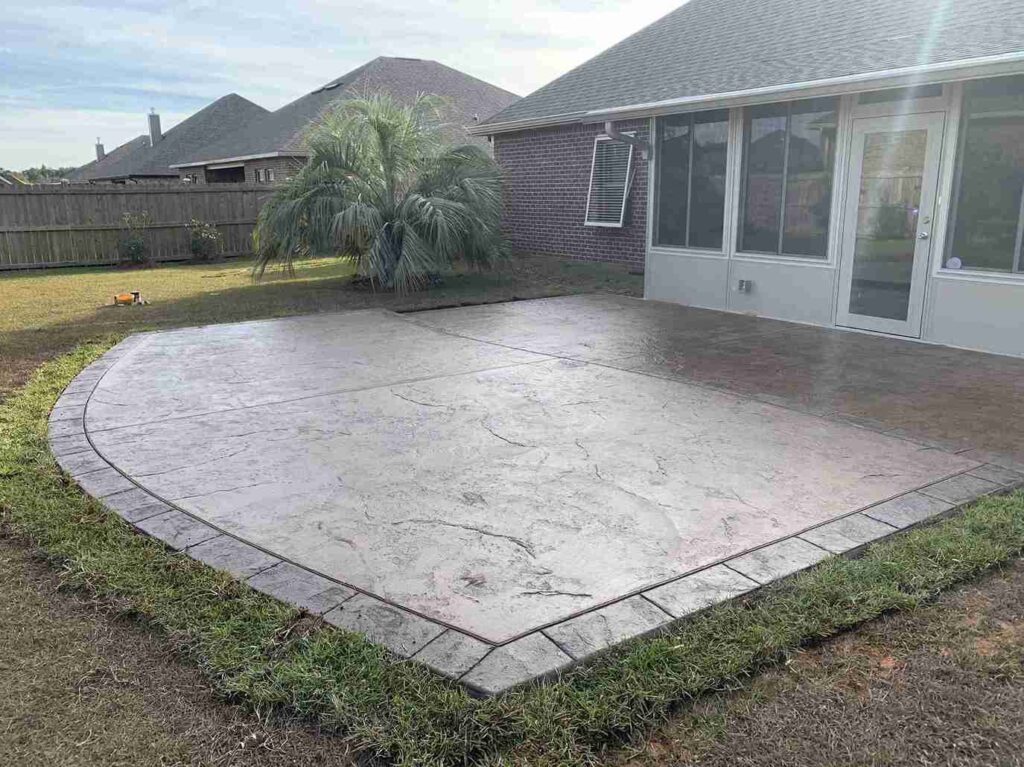
It protects surfaces from harsh elements and enhances their appearance. Whether you’re dealing with heavy rain, snow, sunlight, or chemical exposure, a good sealer strengthens your concrete and helps it last longer.
Moisture and Ice Protection
- Sealers block water from seeping into the surface, boosting concrete freeze-thaw resistance.
- This prevents cracking caused by freezing and expanding moisture.
- It also limits damage from standing water after rain.
UV and Heat Defense
- Sealers add UV-resistant concrete protection, helping surfaces avoid fading and discoloration.
- Especially helpful in sunny areas where outdoor concrete protection is needed year-round.
- Preserves stamped patterns and color vibrancy over time.
Chemical and Salt Resistance
- Sealers guard against oil, chemicals, and deicing salts that wear down surfaces.
- Helps prevent concrete cracking and scaling, especially in winter.
- Critical for driveways and walkways in high-traffic or cold-weather zones.
Film-Forming vs. Penetrating Sealers
- Film-forming sealers sit on the surface and offer a glossy finish with high concrete climate resistance.
- Penetrating sealers soak in for deeper, invisible protection while allowing breathability.
- Choice depends on desired appearance and exposure level.
The Importance of Resealing
- Sealers wear down over time, so stamped concrete maintenance includes resealing every 2–3 years.
- Regular concrete surface sealing keeps protection strong and prevents early damage.
- Professionals can assess when reapplication is needed.
Visual Benefits Alongside Protection
- Enhances color tones and provides optional glossy or matte finishes.
- Makes patterns pop and improves curb appeal while ensuring weatherproof stamped concrete.
- A win-win for beauty and durability.
Can Temperature Extremes Damage Stamped Concrete Surfaces?
- Stamped concrete weather resistance can be affected by temperature swings, causing surfaces to expand and contract.
- This thermal movement may lead to cracking, especially if joints are not correctly placed.
- In cold weather, concrete set time slows, increasing the risk of surface scaling and poor finish quality.
- Using weather-appropriate admixtures improves cold-weather concrete care by accelerating curing and reducing freezing risk.
- Installing windbreaks, heated enclosures, or ground heaters helps maintain stamped concrete durability during winter pours.
- Proper timing of concrete pours and finishes is critical to avoid trapped moisture or early freeze damage.
- Without the right tools and planning, even UV-resistant concrete or concrete climate resistance features won’t be enough to prevent long-term damage.
Is Stamped Concrete a Reliable Choice for Cold or Wet Regions?
- Stamped concrete durability can remain high in cold or wet regions with proper installation methods.
- Use air-entrained concrete to improve concrete freeze-thaw resistance and prevent cracking.
- Curing blankets help maintain temperature during winter installs, supporting even strength gain.
- Apply concrete surface sealing to block moisture and protect against deicing salt damage.
- Poorly sealed surfaces are more prone to chipping and scaling from snow plows and ice impact.
- Choose slip-resistant stamped concrete textures (like broom finish or light embossing) for better traction.
- Regular cold-weather concrete care includes gentle snow removal and avoiding harsh chemicals.
- Reseal every 2–3 years to maintain weatherproof stamped concrete and extend its lifespan.
- Seasonal stamped concrete maintenance ensures the surface stays safe, strong, and visually appealing.
Wrapping Up: How Can You Maximize the Weather Resistance of Stamped Concrete?
Maximizing the weather resistance of stamped concrete starts with getting the basics right, including professional installation, climate-appropriate materials, and consistent care.
When properly poured, cured, and sealed, stamped concrete offers both long-lasting strength and visual appeal, even in regions with harsh weather.
Key techniques such as using air-entrained concrete, applying curing blankets in cold conditions, and choosing UV-resistant sealers help improve durability and prevent issues like cracking, scaling, and discoloration.
Regular maintenance, including cleaning and resealing every few years, is essential for preserving both appearance and performance.
In areas with extreme climates, a professional assessment can ensure the right mix of design, surface texture, and protection methods are used for optimal results.
With the right care, stamped concrete not only adds beauty to outdoor spaces but also stands up to the elements with impressive resilience.

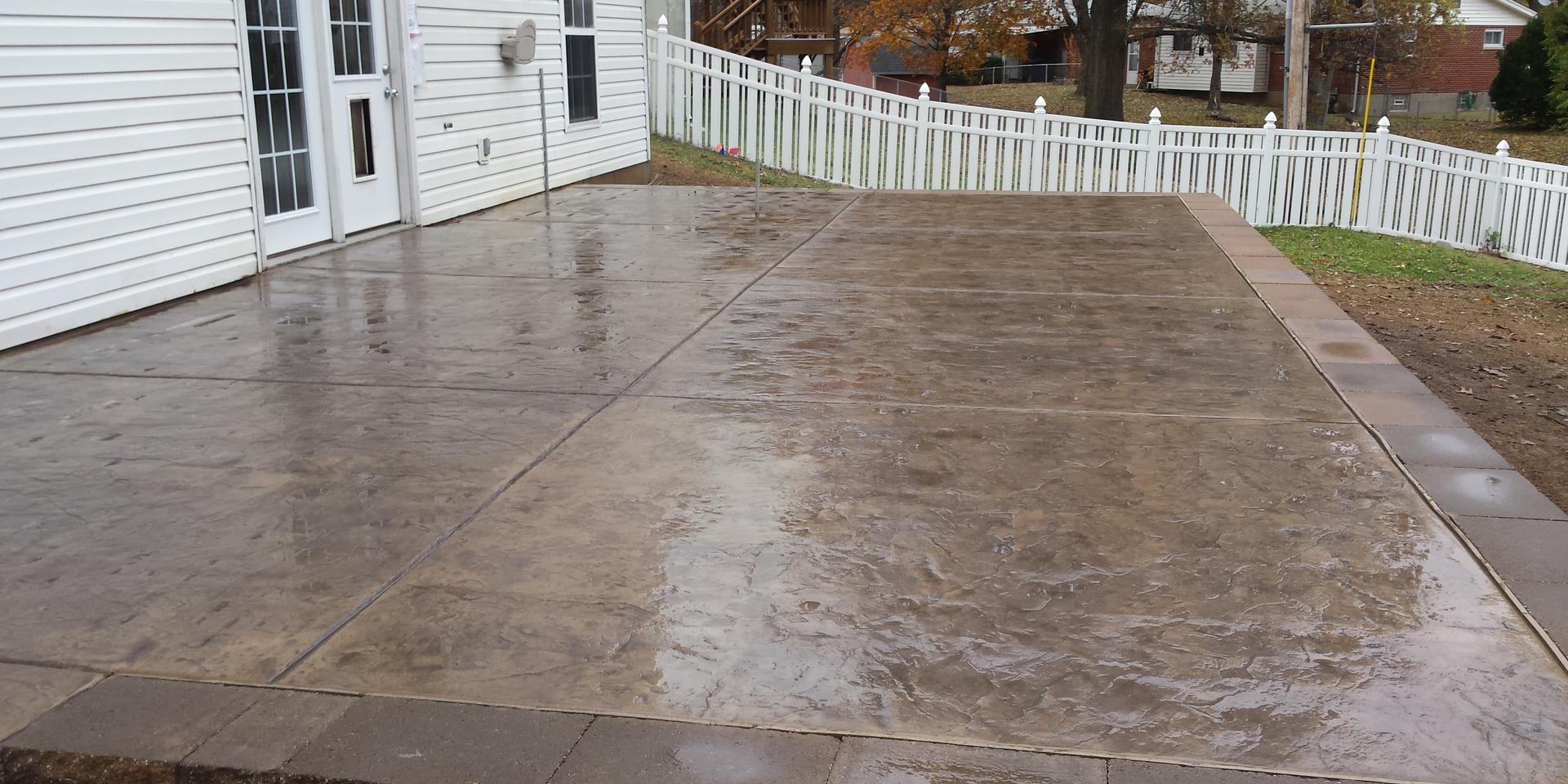
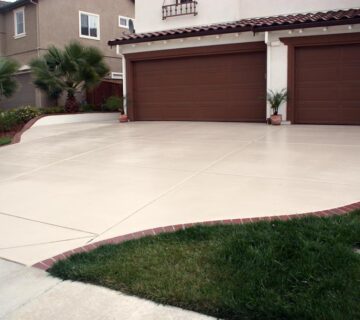
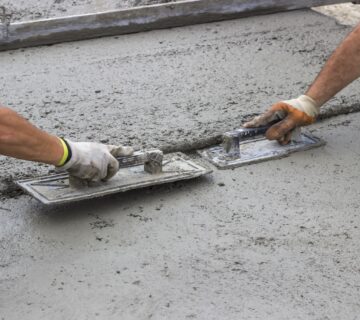

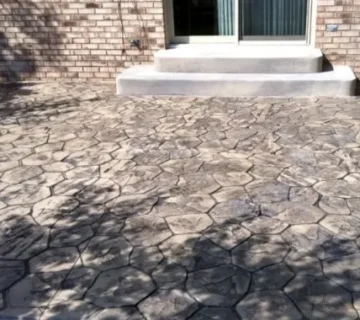
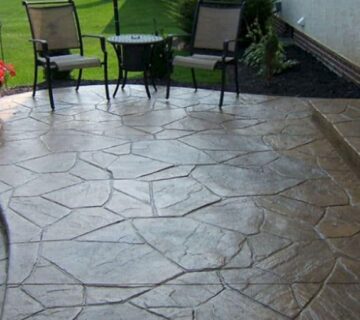
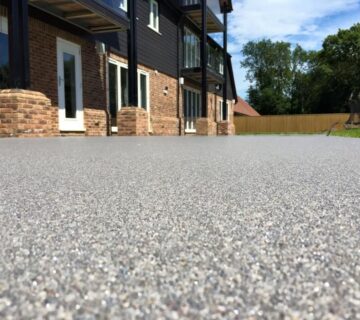
No comment